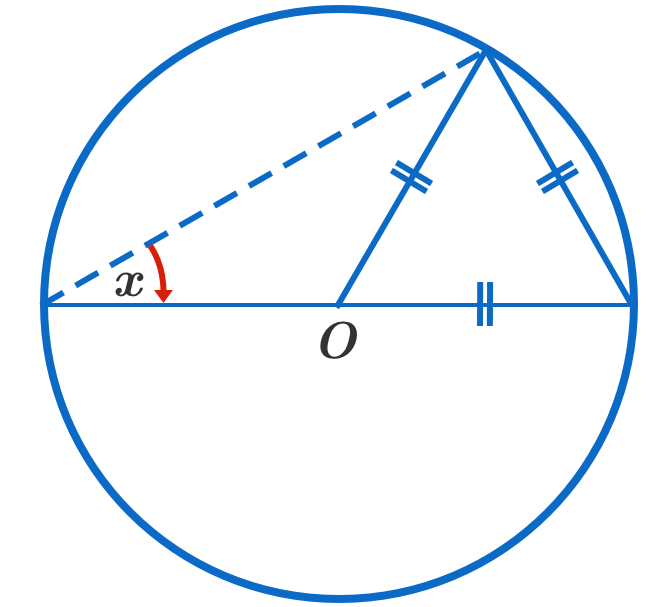This section requires Javascript.
You are seeing this because something didn't load right. We suggest you, (a) try
refreshing the page, (b) enabling javascript if it is disabled on your browser and,
finally, (c)
loading the
non-javascript version of this page
. We're sorry about the hassle.

Let us label the points O , P , Q and R as shown in the figure.
Since the triangle O Q R is an equilateral triangle, then each of its interior angles must be equal, so ∠ Q O R = 3 1 8 0 ∘ = 6 0 ∘ .
And because P O R is a straight line, then ∠ P O Q = 1 8 0 ∘ − ∠ Q O R = 1 8 0 ∘ = 1 2 0 ∘ .
Notice that both the distances P O and O Q represents the radius of the circle, thus P O = O Q , and so △ P O Q is an isosceles triangle.
We have x = ∠ P Q O = ∠ Q P O = 2 1 ( 1 8 0 ∘ − 1 2 0 ∘ ) = 3 0 ∘ .